Black thumb? New to gardening? Want to give your kid some veggies to grow that’ll be a screaming success? Good news! There are crops just made for you.
These five options are the easiest, most bomb-proof edibles in the spring garden. Below you’ll find three annuals and two perennials that will give you that master gardener glow with minimal work.
1. Sugar Snap Peas
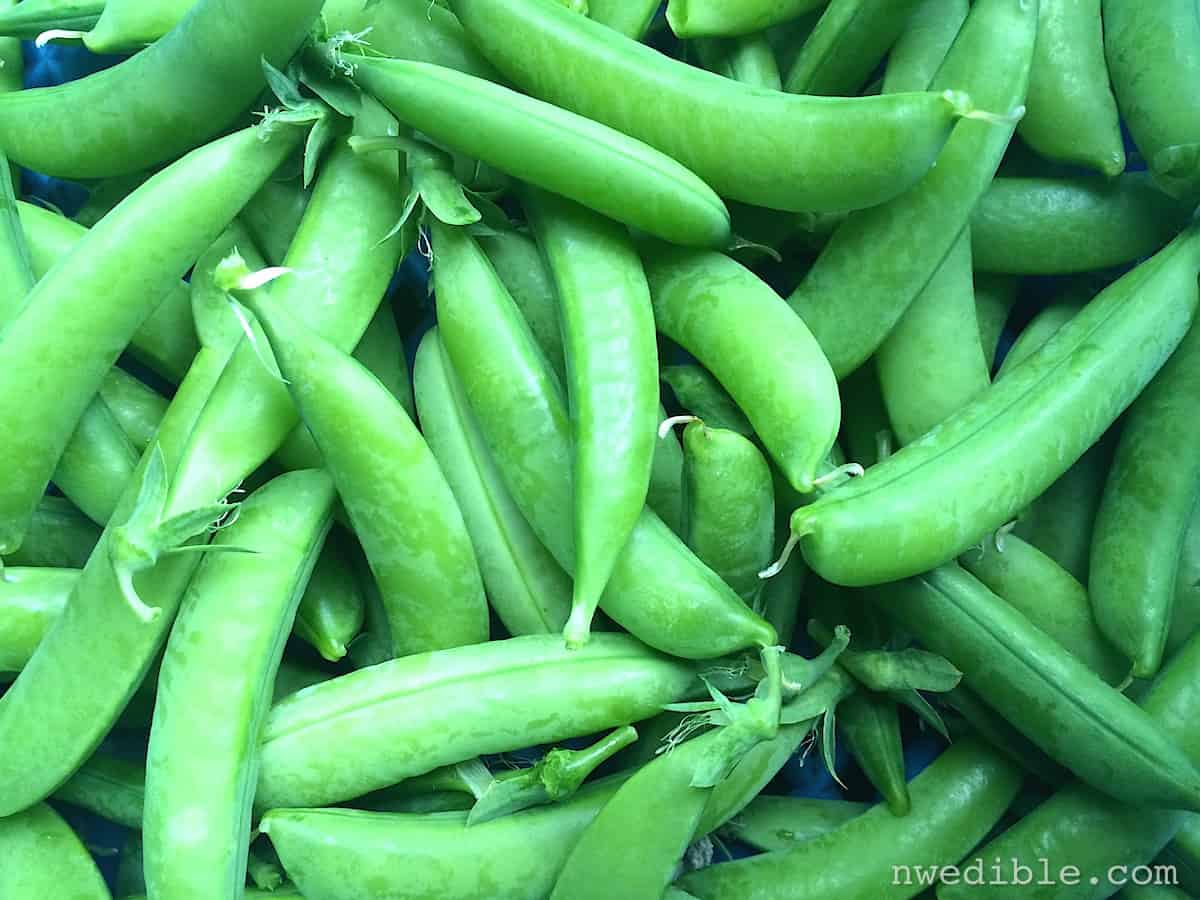
Sugar snap peas are one of the best crops to plant with children. The big seeds are easy to handle, and fast germination in cooler soils help keep even short attention spans interested in the miracle of germination. When it comes to harvesting, snap peas are easy for little hands to pick, and are delicious right off the vine without any additional work.
Like all legumes, sugar snap peas can make their own nitrogen, so they don’t need super rich soil – just a patch of moderately well drained, uncomplicated earth with a neutral pH. Plant seeds in late winter or early spring, when soil temperatures reach about 45 degrees. Give sugar snaps full sun in cool-summer climates and afternoon shade in hot-summer climates. Above USDA Zone 9, snap peas usually perform best as a winter-grown crop started in Fall.
2. Arugula
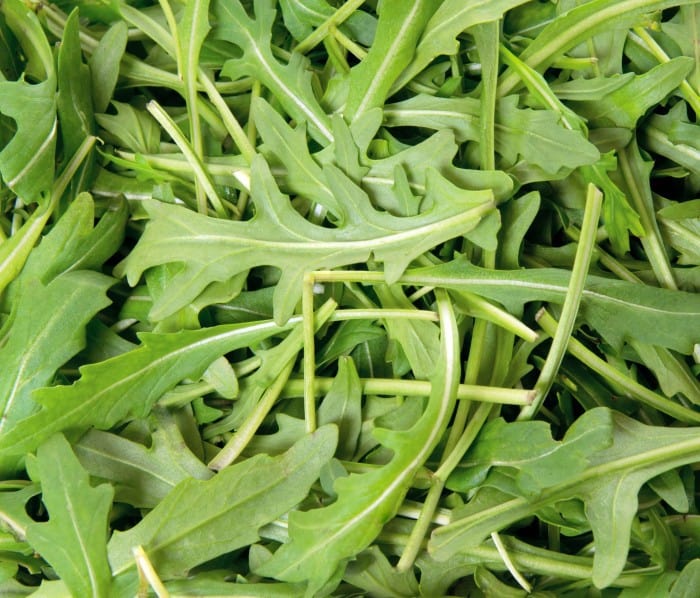
Arugula is tender, peppery salad green when grown in cool weather and harvested young. It’s a fast germinator, fast grower and – in hot weather – a fast bolter. Arugula readily self-seeds in cool, moist soils, so don’t be surprised if it naturalizes around your yard.
Arugula is best grown directly from seed in a wide swath – don’t bother starting plants in pots or buying transplants, the result doesn’t justify the effort. Scatter seeds lightly across a square foot or more of smoothed soil and water them in. When the leaves are 4 to 6 inches tall, cut them about an inch from the ground with scissors. Leave the arugula to regrow; it will usually tolerate several harvests this way before exhausting itself.
More Info: How To Grow Arugula in the Pacific Northwest
3. Radishes
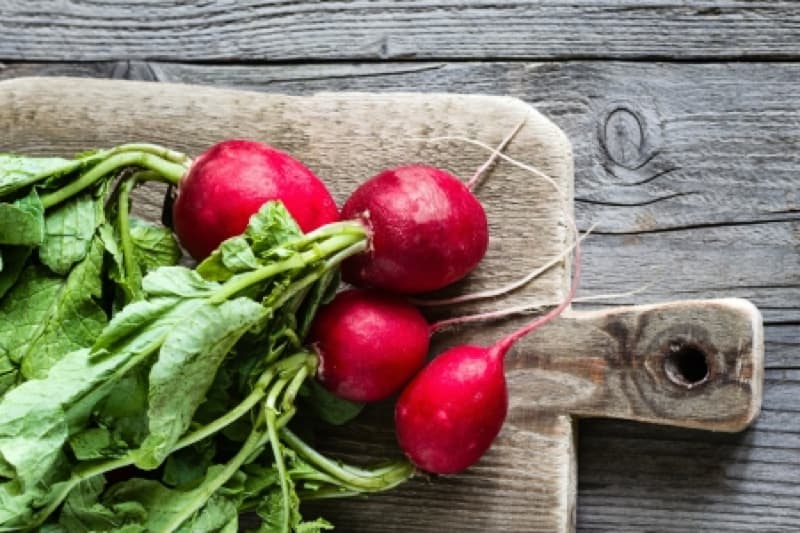
Mild, crisp salad radishes are best grown in the mild weather of spring or fall. Salad radishes are one of the fastest vegetable to reach harvestable size; many can be plucked from the ground 3 to 4 weeks after sowing. My favorite varieties are French Breakfast and the multi-colored mix called Easter Egg.
Fast germination makes radishes an excellent crop to inter-sow with slower germinating friends. I usually sow radishes in the same row as carrots. Slow-germinating carrots are hardly up and growing by the time the radishes are ready for the table, and in the meantime the radishes mark the row for the carrots nicely. Radishes can also be interplanted with broccoli, cauliflower – even potatoes!
For best quality radishes, provide loose soil that doesn’t give too much resistance to the fast growing roots. Full spring sun and consistent soil moisture will do the rest. The only real trick with radishes is to remember to harvest them promptly, before they loose their cool and turn big and fibrous. To check on your developing radishes, just look for signs that the root is swelling up at soil level. Once the root has filled out, the radish can be harvested at any time.
4. Chives

An attractive perennial herb in the onion family, chives cheerfully come back, year after year, without any effort from the gardener. While chives can be started fairly easily from seed by scattering fresh seeds lightly over an area about 6”-square, it’s quicker to buy a pot of mature chives from a good nursery, or beg a healthy division off of a neighboring gardener.
Established chives will grow throughout the summer, allowing multiple rounds of harvesting. Harvest chives before they begin to flower by holding the hollow, flexible green stalks in one hand, and snipping the chives 3 to 4 inches above the soil with garden shears. After chives bloom, the stems harden and aren’t as good for fresh eating. However the purple blossoms are edible, with a pleasant, mild, oniony quality, and make a stunning garnish or salad addition.
Over time, clumps of chives can get quite large. Divide chives like any other bulbing perennial in the late fall. Pry the small bulbs apart or simply cut clumps apart with a shovel. Space the new divisions 12-24” apart, and replant.
5. Rhubarb

Another easy perennial that thrives on neglect and comes back reliably every spring, rhubarb is grown for it’s attractive stalks which have a tart, floral flavor. Although not a fruit, rhubarb is often treated as one in the kitchen, and is sweetened with sugar and paired with strawberries for classic spring desserts. It’s also excellent turned into syrup for delicious cocktails.
There are several named varieties of rhubarb, but the taste is similar between all of them. Look for a variety that you find attractive and that grows well in your area. 1 or 2 year old rhubarb plants – called crowns – are available in good nurseries in the fall and early spring. Divisions from established plants might be available from neighbors as well. Plant crowns or divisions in a sunny spot so that the top of the crown or the bud from the division is just slightly below soil level. Leave plenty of room – rhubarb gets big!
Give newly planted rhubarb at least a year – but ideally two – before harvesting. Then, harvest by pulling or cutting individual, outer stalks from the plant. Remove the poisonous-to-eat leaf from the stalk and allow it to compost in place as a mineral-rich sheet mulch.
What easy vegetables do you love to grow?
Pin Me, Share Me, Save Me For Later
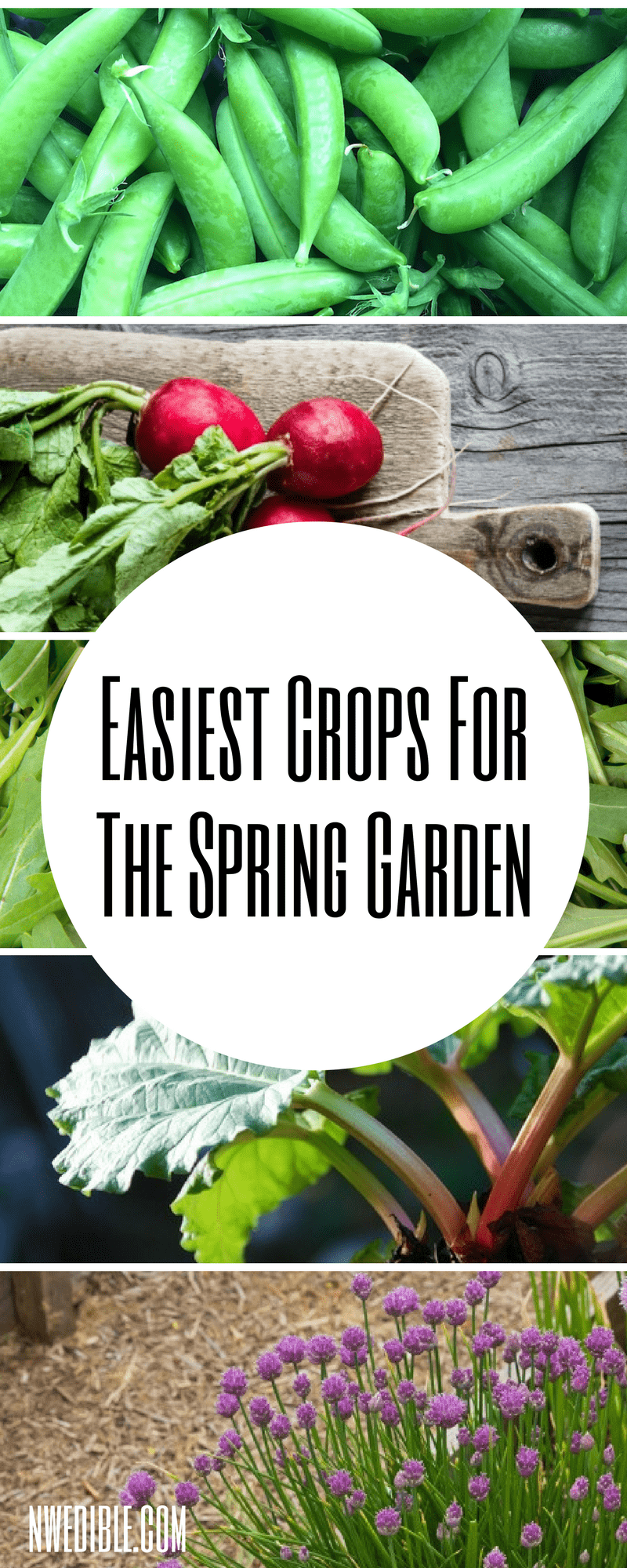
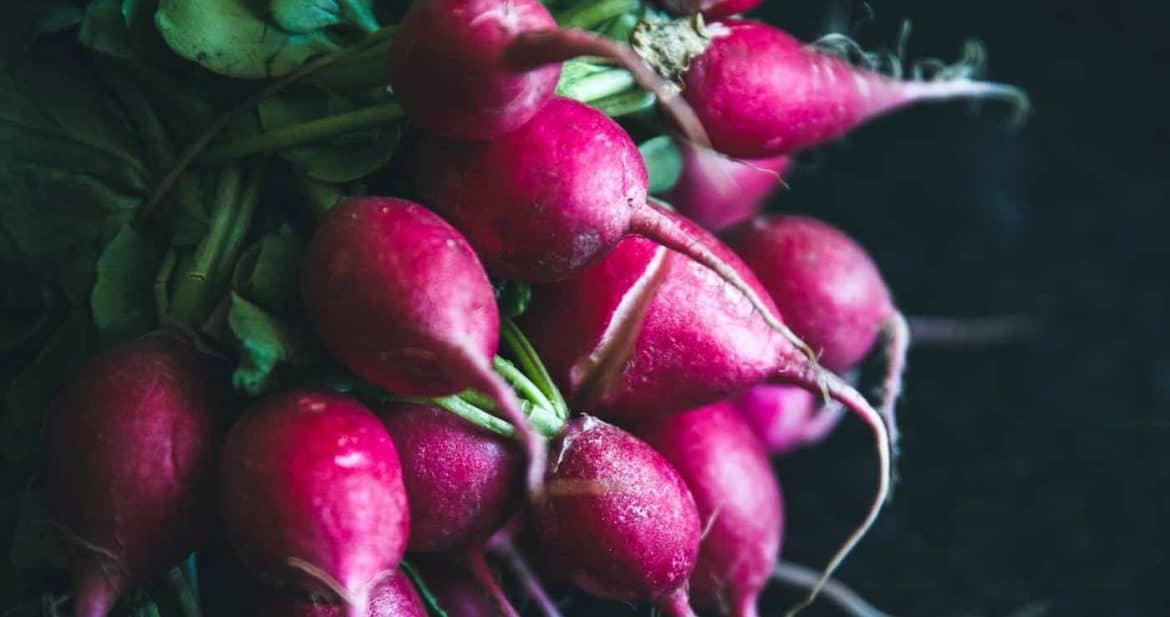
Good to see you posting again, Erica. Hope your health and well-being continue to improve.
Thank you!
My favorite way of dealing with chive blossoms (after I’ve picked a few to garnish salads) is to simply cut the whole bunch down about 2″ from the ground. The tender chives will grow back in no time, but the flower stalks will stay gone until next year.
Good tip, but I love the blossoms, too! Maybe I’ll go half-and-half?
I allow daikon to self-sow. It has really helped break up and improve the soil.
I keep dividing chives all over the yard. I could never eat as many as I have. Such a charming little allium. The bees love them…good enough for me.
Rhubarb. I am rhubarb kryptonite. I just don’t understand how one person can kill so many rhubarb plants. The first three years I started with crowns. The first two years, my chickens scratched them to death. Fair. Last year, no chickens…the crowns started off fine, then all the leaves disappeared. Ok…slugs? This year, I bought a small plant with leaves, it looked like it was going to be a success for a few weeks, then two of the three leaves turned brown and promptly melted into the ground. I honestly don’t get it. I am the only person on the planet who can’t grow this stuff.
Do you harvest it, or just let it rot in place as a soil improver? Daikon as a crop is super hard for me – by the time they are of decent size, root maggots have found them.
I’ve been letting it just rot in place, mainly because I put it in really compacted ground in a guild in what I call my Scorched Earth Garden, not in a nice, deep, fluffy garden bed. I have dug up a couple and fermented them and those were lovely! What I eat more than anything are the copious seed pods. I did try fermenting those…NOT lovely. All the flavor got sucked out of them. But letting them self-sow and rot for a couple years in a row REALLY helped my garden. The way things have come up this year, you’d never know that three years ago it was basically dead soil under landscaping fabric and so hard I couldn’t get through the top inch with a shovel. Go radishes!
Great idea to use the rhubarb leaf as a sheet mulch! Thank you for that tip!
Also, love to see you back in my reader… 🙂
It’s great for that! Very high in minerals and just sort of melts into the soil over a month or so. Thanks for your kind words.
First of all, words cannot express the joy that you are blogging regularly again. WAHOO!!
Second of all, would you consider writing some about homeschooling? It’s an option my family is actively exploring, and it would be so great to hear your perspective. Best wishes from sunny (for five minutes, at least!) Portland!
Whaddabout the amazing power of the zucchini?
It is a garden essential! But in the Pac NW at least, summer squash is firmly a summer-harvested crop. July, it starts to come in. I should do another post: 5 easiest summer veg!
Thank you for all the research and compilation of information that you did on rhubarb. That article was what drew me to your website. I especially appreciated the wide plethora of recipes that you included in the article.
Would love to see you do one on figs and one on persimmons.
Thanks again,
Mary Elizabeth